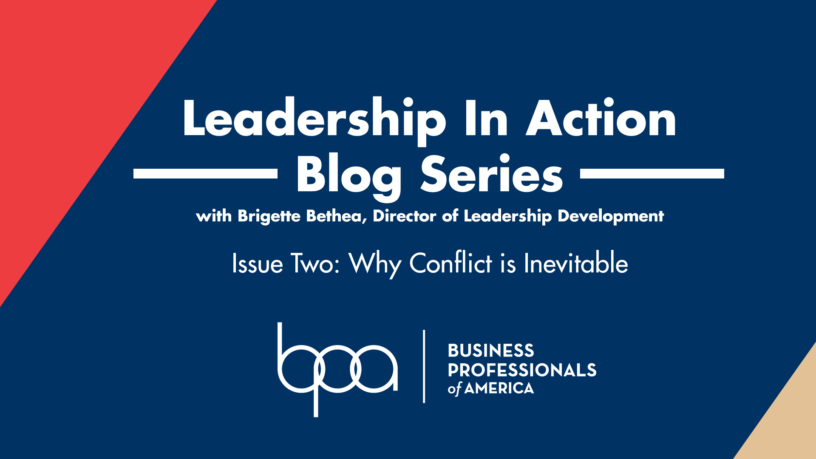So, here we are emerging from the trenches as young leaders, knee deep in BPA projects, collaborating with teammates, prepping for State Leadership Conferences, and planning out Torch resumes and BPA Cares projects. When all of a sudden: BOOM! Conflict, a disagreement, or conflicting personalities. Wait! What just happened? Everything was going so smoothly and now there is a potential snag in productivity. Well here is the good news, while conflict is inevitable, disagreements can be a key component to progress. It’s how we handle conflict that sets us apart as good leaders. The truth is our teams are made up of lots of different people from diverse backgrounds and differing values. However, whether with a fellow BPA member or advisor, we won’t always see eye-to-eye on everything. Problems, or even solving problems, occur in different ways.
Whether you realize it or not, conflict resolution likely started in the sandbox when your friend took away your favorite bucket or shovel. As children, we had a lot of options at our disposal: we could fight, flee, freeze, or tell an adult. And to be honest, even as we get older and find ourselves in the heat of conflict, we possess many of those same sandbox options. The difference is that hopefully we are more mature and better equipped to deal with and resolve the conflict. When emotions are heightened and we are determined to prove our position, there are those of us who forget to keep the others within the conflict in mind because to us, it is important to be right and feel validated. There are also those who may experience high emotion during conflict, and will avoid the situation all together in hopes that the issue will just blow over. Still, there are others who will work to accommodate the other party forgoing their own position completely. So what is the right approach?

Assertiveness and cooperation serve as the foundation for managing and handling conflict. However, being too cooperative or too assertive is not beneficial for progress. Ask yourself am I focused solely on my needs during this conflict or only on the needs of the other person? Am I willing to collaborate or compromise to solve a conflict? Or, do I avoid conflict all together?
Before we dig deeper, let’s first take a look at the five styles of conflict as defined in the text Working Through Conflict: Strategies for Relationships, Groups, and Organizations. Think about the last conflict you were in and take a look at the following chart. Where did your style fall on the chart?
One thing to note is that you may start one way during a conflict and find yourself shifting styles as the conflict unfolds. Personally, I don’t like conflict at all, so my natural inclination is to avoid it. However, once I have taken some time to reflect, I will generally address the conflict straight on with collaborative or compromising stance. When tensions are extremely high, I may enter into a conflict with a more competing style, but again, after time to reflect, will reengage in a more compromising and collaborative approach. The common denominator in my case was taking time to reflect on what is most important during the disagreement.
Ideally, we want to stay goal-oriented and focus on a resolution, ensuring not to damage the relationship. Compromise and collaboration emerge as the most positive conflict styles and allow room for growth for all parties involved. If we focus on competing, accommodating, or avoiding, we will miss critical opportunities for growth as a leader. Assess the situation, determine what conflict styles are in play, and then adjust to ensure you are staying goal-oriented.
Now that you have some understanding and tools of how to identify the dominant conflict styles, you will be more aware of when to use them and when to shift.
The way we handle conflict can either stop progress and communication all together, or create deeper and more meaningful collaboration. Your mindset when entering conflict is what sets you apart. As you continue to collaborate this year, think of every potential conflict as a space for growth, as well as an opportunity to connect on a deeper level with your teammates.

